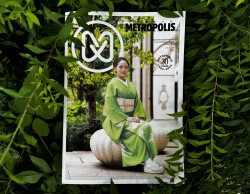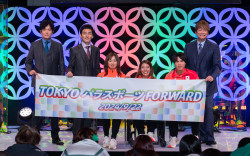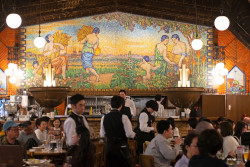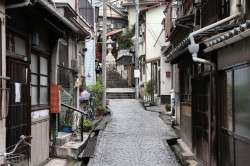
Originally published on metropolis.co.jp on January 2010
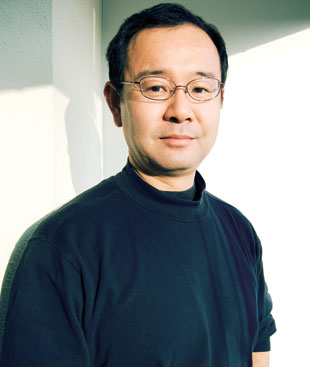
Photo by Julio Shiiki
With well over 100,000 restaurants, izakaya and hole-in-the-wall eateries, Tokyo is the most inviting city on the planet for dining out. But that in itself poses a problem: there’s too much choice. How do we sort through the saturation media coverage to find the really good places? That’s where Satoshi Fuma, co-founder of the bilingual listings site Eatpia, comes in.
Unlike other gourmet websites, Eatpia—in Japanese the name is pronounced more like “eat-topia”—only lists a select number of places that Fuma and his colleagues personally rate. Now that food blogs are ubiquitous, that may not sound unusual. But when they started in 2002, it was virtually unheard of.
“The idea was to create a listings site that readers could really trust,” Fuma explains. “Tokyo has a lot of very good restaurants, but there are also some pretty bad ones—as well as many, many mediocre places. The problem is, the Japanese media don’t distinguish between them. The local magazines feature them all, not just the ones with the best food. There are very few local sources of information that focus solely on the good places.”
Fuma says his philosophy is “Quality over quantity.” “People always seem to demand too much choice—more choice than they can ever select from. When there are too many options, people get confused and actually lose their ability to be selective. At Eatpia.com, our aim is to keep the listings compact, but to make sure every single one is reliably good.”
Despite its relatively long eight-year history, Eatpia lists just 30 restaurants. Most are located away from mainstream dining areas like Ginza or Roppongi. That’s a conscious decision, Fuma says.
“Over the years, many restaurants have contacted us, but in almost every case, we’ve found they don’t meet our criteria. We only pick the kind of restaurants that we ourselves are happy to keep going back to, places that we’d be confident about introducing to our own friends.”
And what kinds of places are those?
“Obviously, food quality is the most important factor. I believe that the quality of the cooking reflects not just the skill of the chef but the overall character of the restaurant. That’s why many of our restaurants are small owner-chef places.”
One of the outstanding features of Eatpia—and long before the Michelin guide reached these shores—is that it’s entirely bilingual. Besides sending out newsletters to subscribers, it even provides menu translations in English for restaurants where only Japanese is spoken. This came about more by chance than design.
“Actually, we started the English version because we were asked to by a restaurant that wanted to attract more foreign customers. Even though that wasn’t our original idea, we said, ‘Of course we can do it!’ But this was only possible because an American friend who is equally passionate about food and wine was kind enough to help us.”
In creating Eatpia, Fuma took advantage of his background in the food and beverage industry. For almost ten years he worked for a major importer, handling one of the biggest international liquor brands, and after that for a major multinational food company. Needless to say, he spent plenty of time eating and drinking. “Through those jobs, I met a lot of people in the industry. It really spoiled me. I used to spend all my time at the top bars and restaurants in Tokyo.”
Right now his main focus, like that of most gourmets in the city, is French and Italian food. Yet he says the aim is to introduce restaurants in all categories, as long as the quality is right.
As for Japanese cuisine, Fuma willingly admits his lack of expertise. He says he leaves that category to another colleague.
“We currently list only four Japanese restaurants, but the interesting thing is, two of them have been awarded Michelin stars this year. One of them is so small we don’t know how Michelin found it. Maybe they looked at eatpia.com!”
For more information, see www.eatpia.com.
French – Chez Olivier
Chef Olivier Oddos (who looks like a French culinary professor) presents cutting-edge French cuisine at his restaurant, which opened last September. Diners should note that his food is more about quality than quantity. 4-1-10 Kudan-Minami, Chiyoda-ku. www.eatpia.com/olivier
Premium pizza – da Ivo
With a casual yet authentic atmosphere, this place is known for its finger-licking-good pizzas, including my favorite, the Campagnola. But the pasta and meat dishes are definitely underappreciated. 1-6-10 Hiroo, Shibuya-ku. www.eatpia.com/daivo
Burger – EAT
Burgers cooked by Michi-san here are better than other gourmet burger shops in Tokyo, because, having worked at acclaimed restaurants in LA (including his own) for more than 20 years, he knows what it takes to make not only good burgers, but good food. 2-12-27 Kita-Aoyama, Minato-ku. Tel: 03-6459-2432.
High-rise hangout – The Peak Lounge
I like this place because it is quieter, more relaxing and less well-known than New York Bar, which is more like a tourist attraction. Definitely a good place to escape to. 42F Park Hyatt Tokyo, 3-7-1-2 Nishi-Shinjuku. http://tokyo.park.hyatt.com
